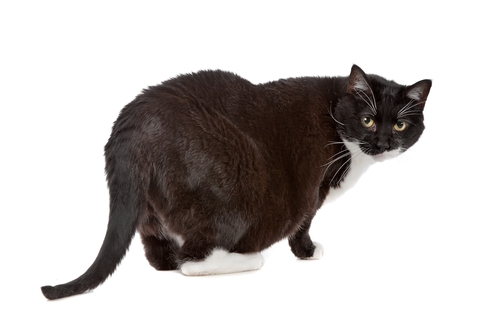Pets May Get the Flu More Often than Thought

Humans aren't the only ones at risk for contracting the flu this season: our furry friends can fall ill from the disease as well.
In fact, flu infections in cats and dogs may be much more common than thought, experts say. And pets can catch the flu from their owners, research finds.
One study of cat blood samples found about 30 percent of cats in Ohio had been infected with seasonal flu, and 20 percent had been infected with the H1N1 flu strain that caused the 2009 pandemic. Studies also suggeset there has been an increase in cat flu infections since 2009.
Researchers have known since the 1970s that cats can get the flu, and since 2000 that dogs could get it, but detailed reports of such cases have been rare, said Christiane Loehr, an associate professor at Oregon State University's College of Veterinary Medicine.
Loehr and colleagues are conducting a broader study of blood samples from cats across the United States to pin down exactly how often cats get the flu.
The results so far suggest there was a dramatic increase in cat flu infections after 2009, Loehr said.
It's not possible to know how sick the cats in the Ohio study were — the blood samples only show that they were infected at some point. It's also not clear whether these cats caught the flu from their owners, from other cats or animals, Loehr said.
Get the world’s most fascinating discoveries delivered straight to your inbox.
But when human-to-pet transmission happens, researchers worry not only about the health of the pets, but also about the evolution of the virus. A flu virus that hops across species has the potential to undergo changes to its genetic code that could make it more virulent and dangerous to people.
"All viruses can mutate, but the influenza virus raises special concern," because it can change large segments of its DNA fairly easily, Loehr said. "In terms of hosts and mutations, who's to say that the cat couldn’t be the new pig? We'd just like to know more about this."
So far, the researchers have confirmed 13 cases in which a pet cat or dog caught the pandemic H1N1 flu strain from a person.
One of the first known cases occurred in Oregon in 2009. An 8-year-old cat became ill with flu and developed pneumonia after catching the disease from its owner, who was eventually hospitalized with H1N1.
In another case, a 10-year-old cat with a fever and breathing problems was found to have pandemic H1N1, and died after four days. The cat likely caught the flu from a child in the house who had been sick the week before. Four other cats in the house also showed signs of respiratory disease, but recovered.
Whether sick pets can transmit the flu virus back to people is not known, Loehr said.
Animals infected with the flu develop symptoms similar to those in people, including breathing problems, a running nose or eyes, and fatigue.
To protect pets, Loehr advised that owners get the seasonal flu shot, which will reduce the chances of catching flu and spreading it to others — both people and pets.
People who become sick with the flu should take the same precautions with their pets as they would with other people, such as minimizing contact with them, Loehr said.
Because of the large increase in flu in cats after 2009, the researchers are also investigating whether the pandemic strain of H1N1 is particularly adept at infecting felines, Loehr said.
Pass it on: Flu infections in cats and dogs may be much more common than thought.
Follow Rachael Rettner on Twitter @RachaelRettner, or MyHealthNewsDaily @MyHealth_MHND. We're also on Facebook & Google+.

Rachael is a Live Science contributor, and was a former channel editor and senior writer for Live Science between 2010 and 2022. She has a master's degree in journalism from New York University's Science, Health and Environmental Reporting Program. She also holds a B.S. in molecular biology and an M.S. in biology from the University of California, San Diego. Her work has appeared in Scienceline, The Washington Post and Scientific American.


